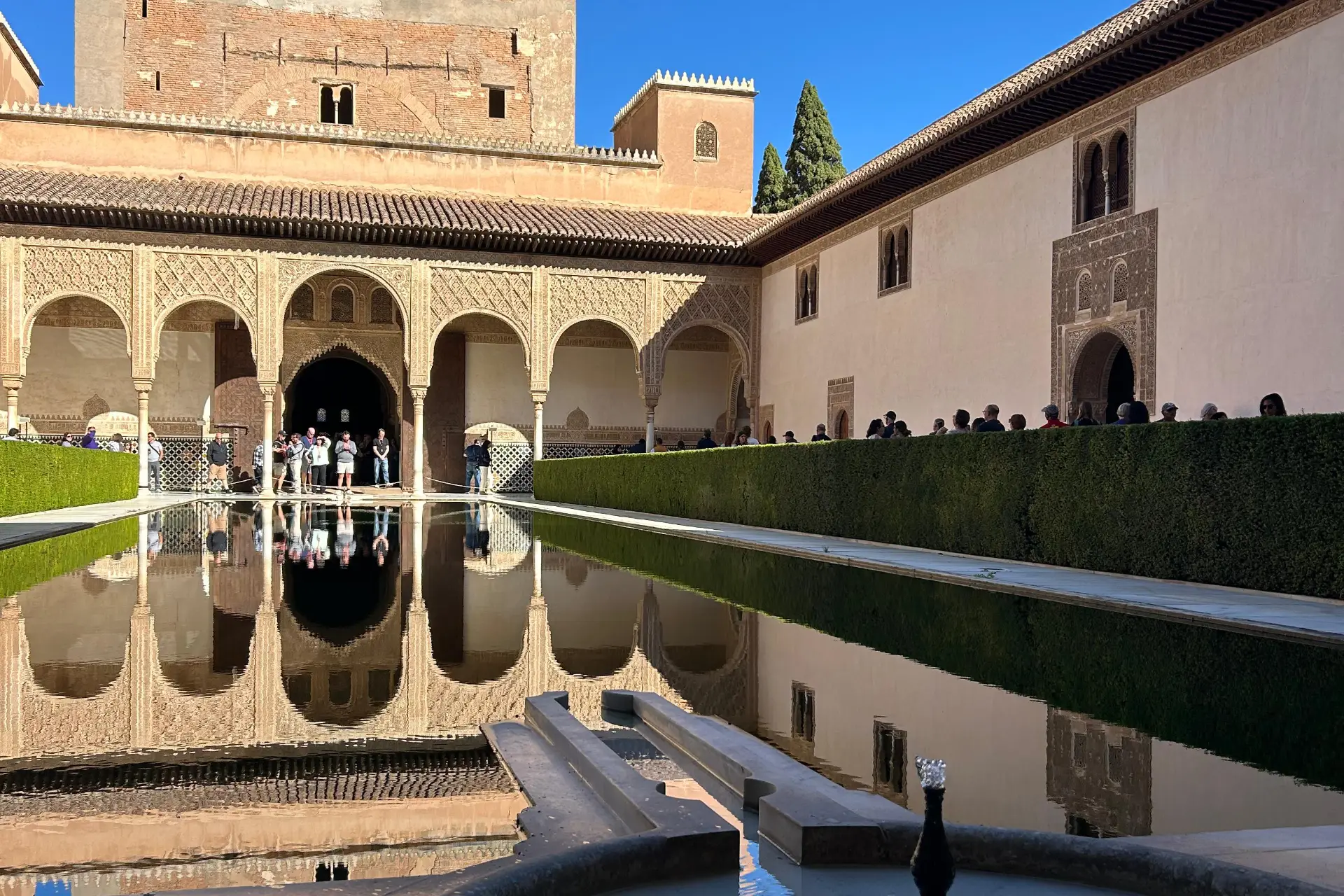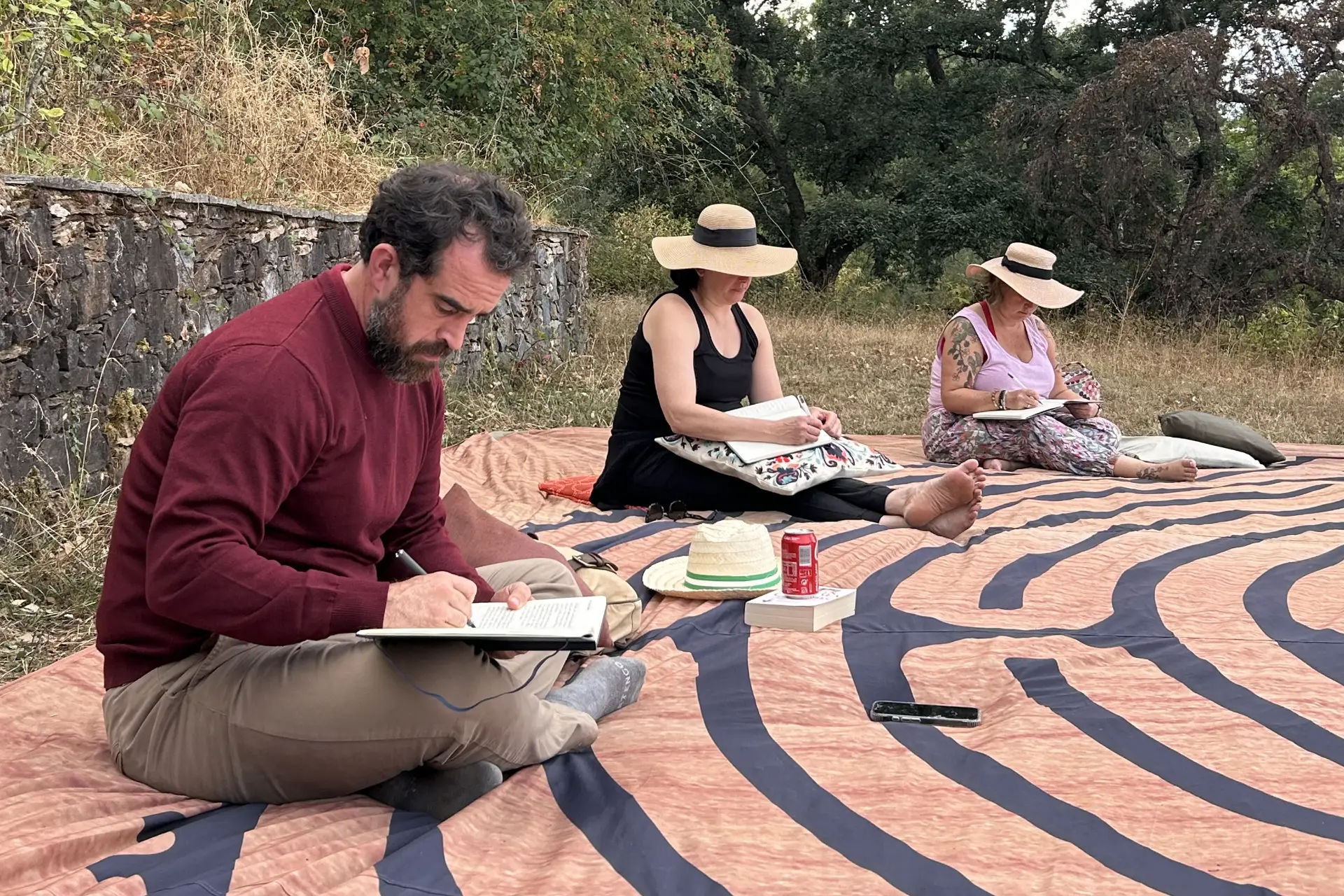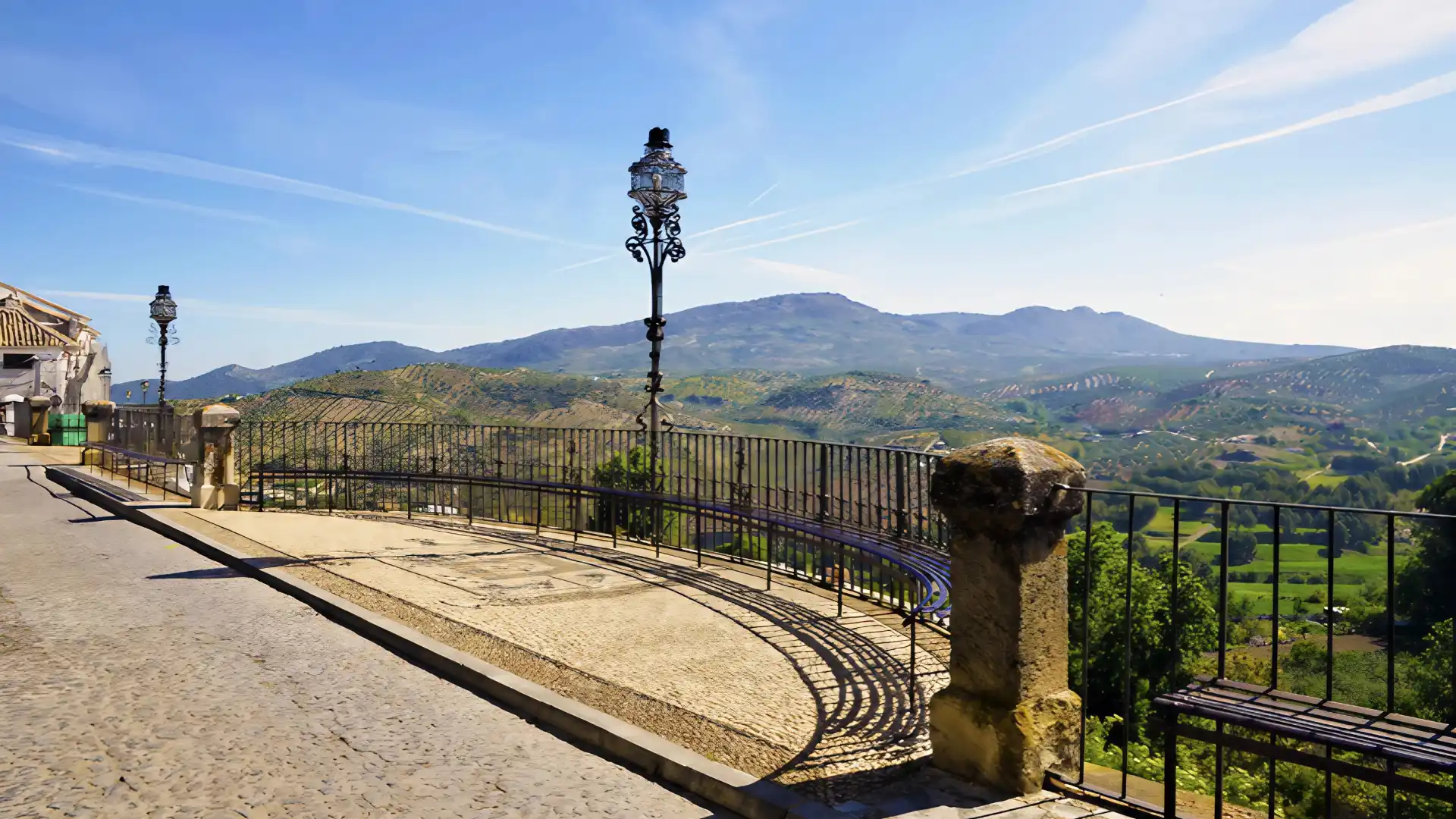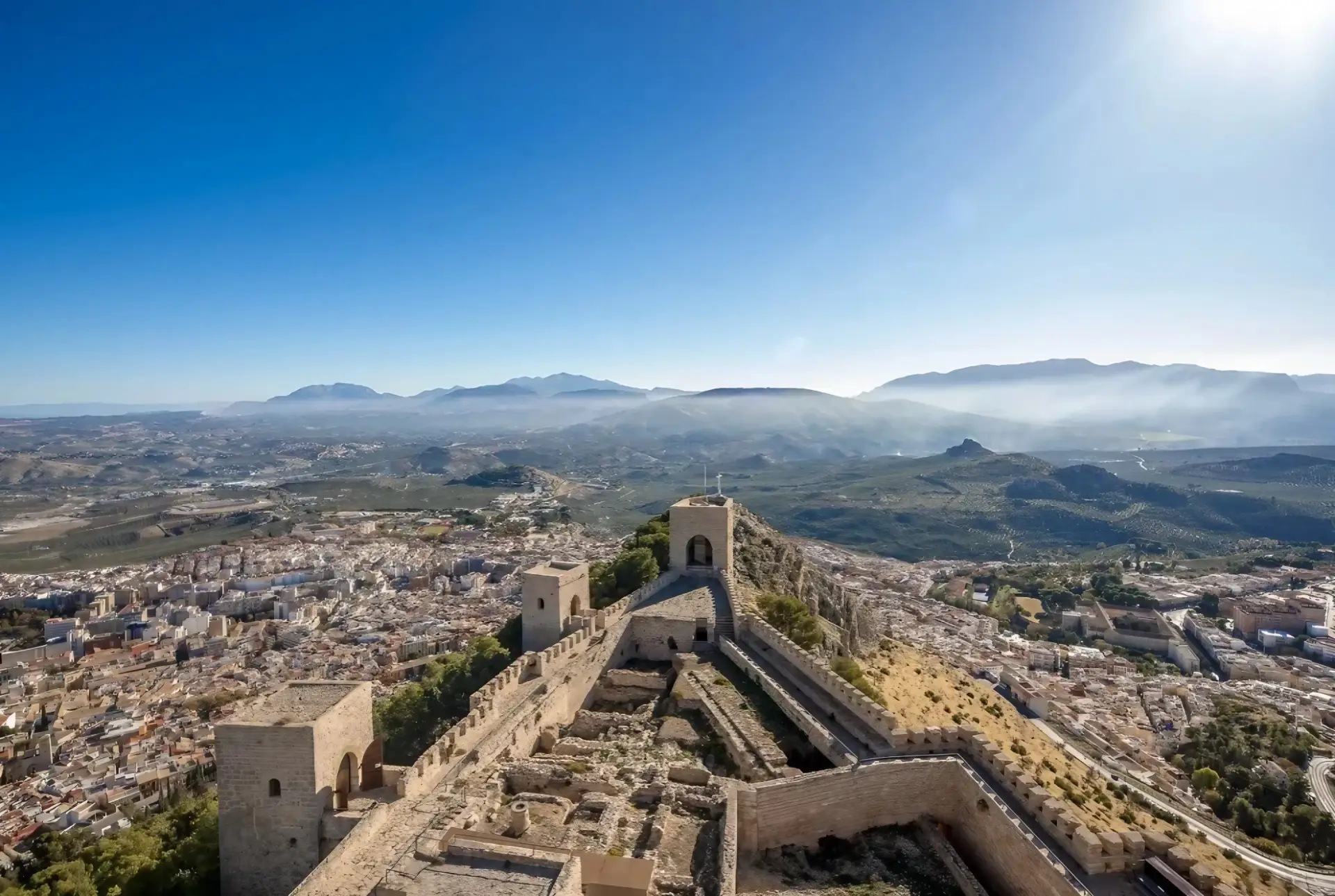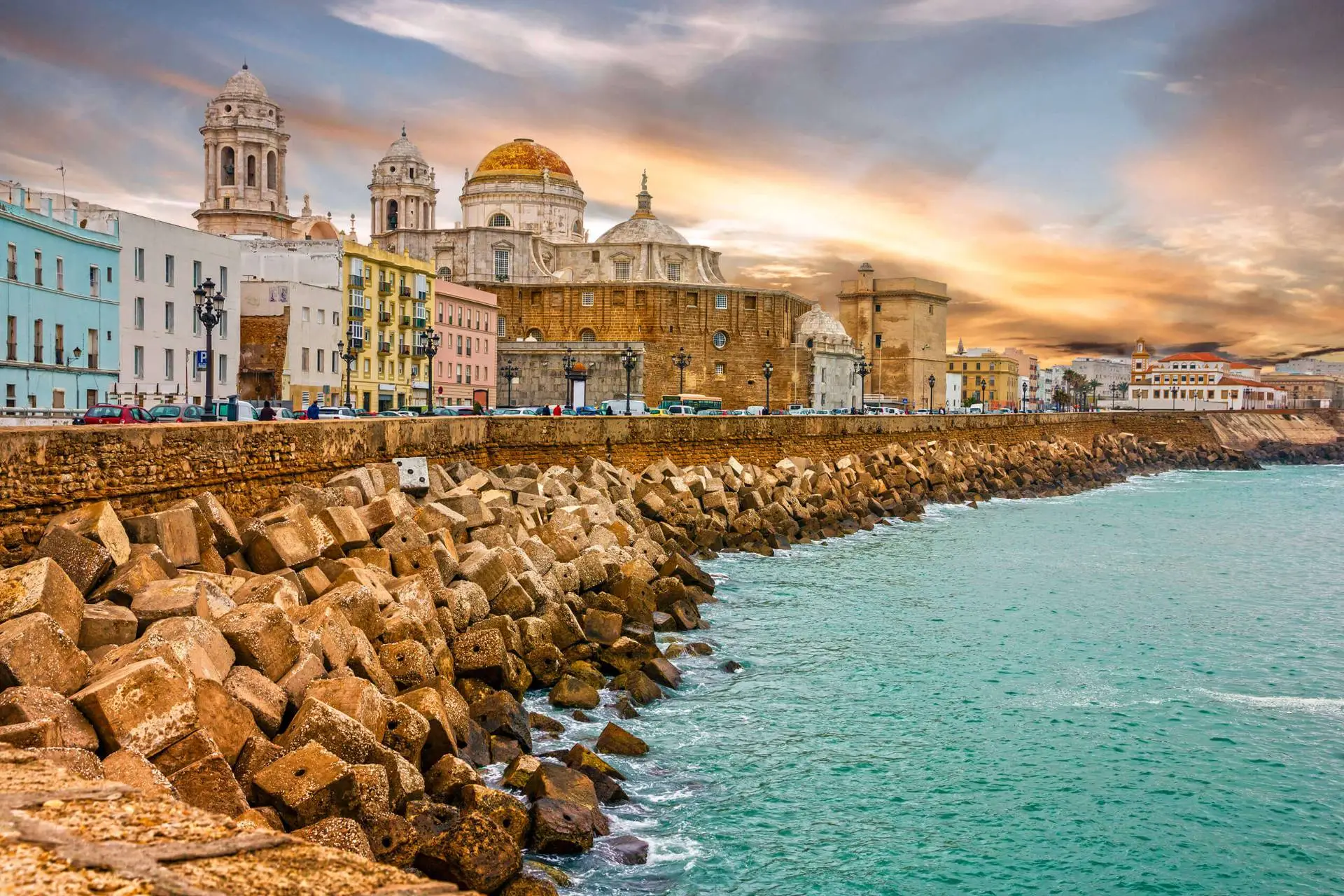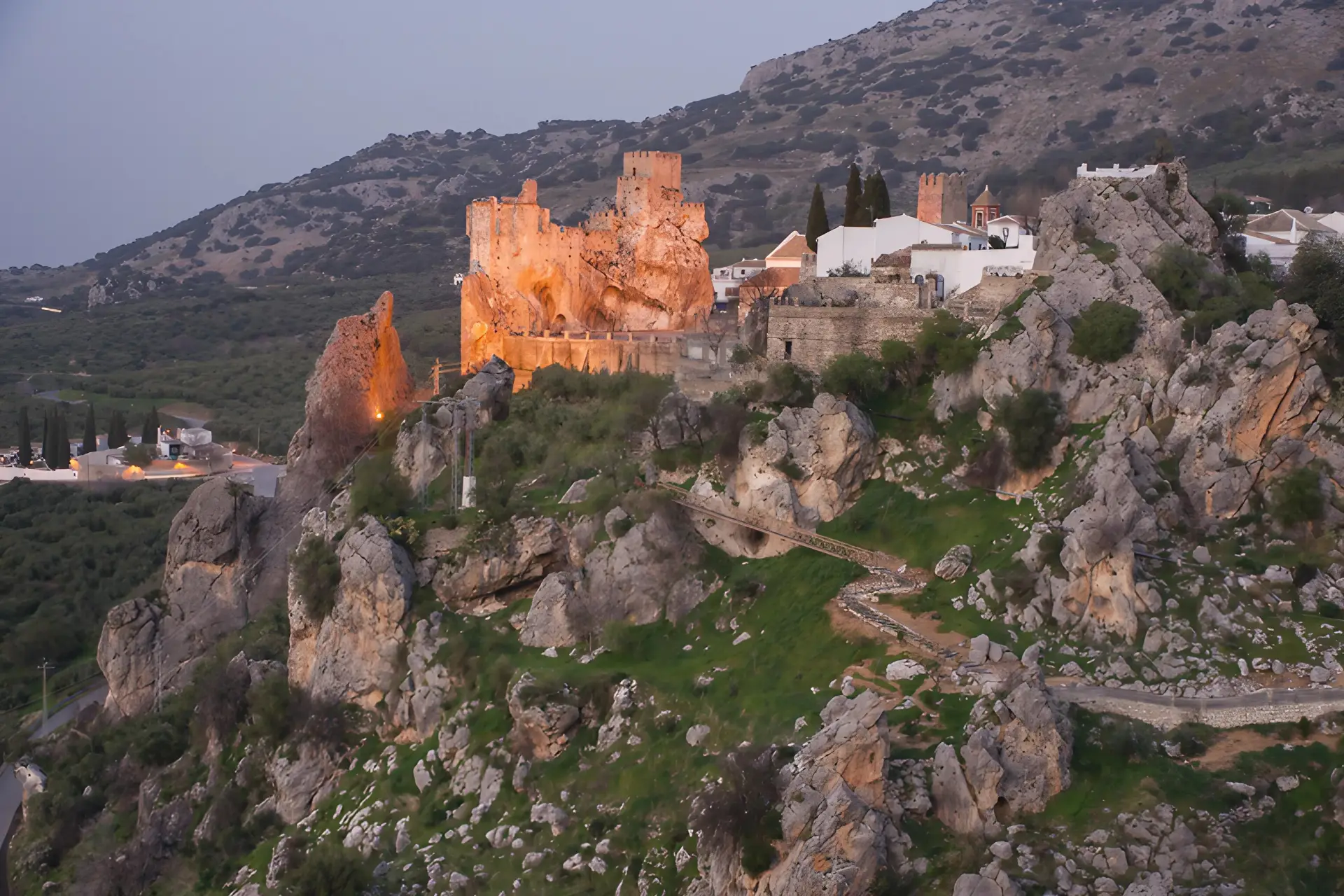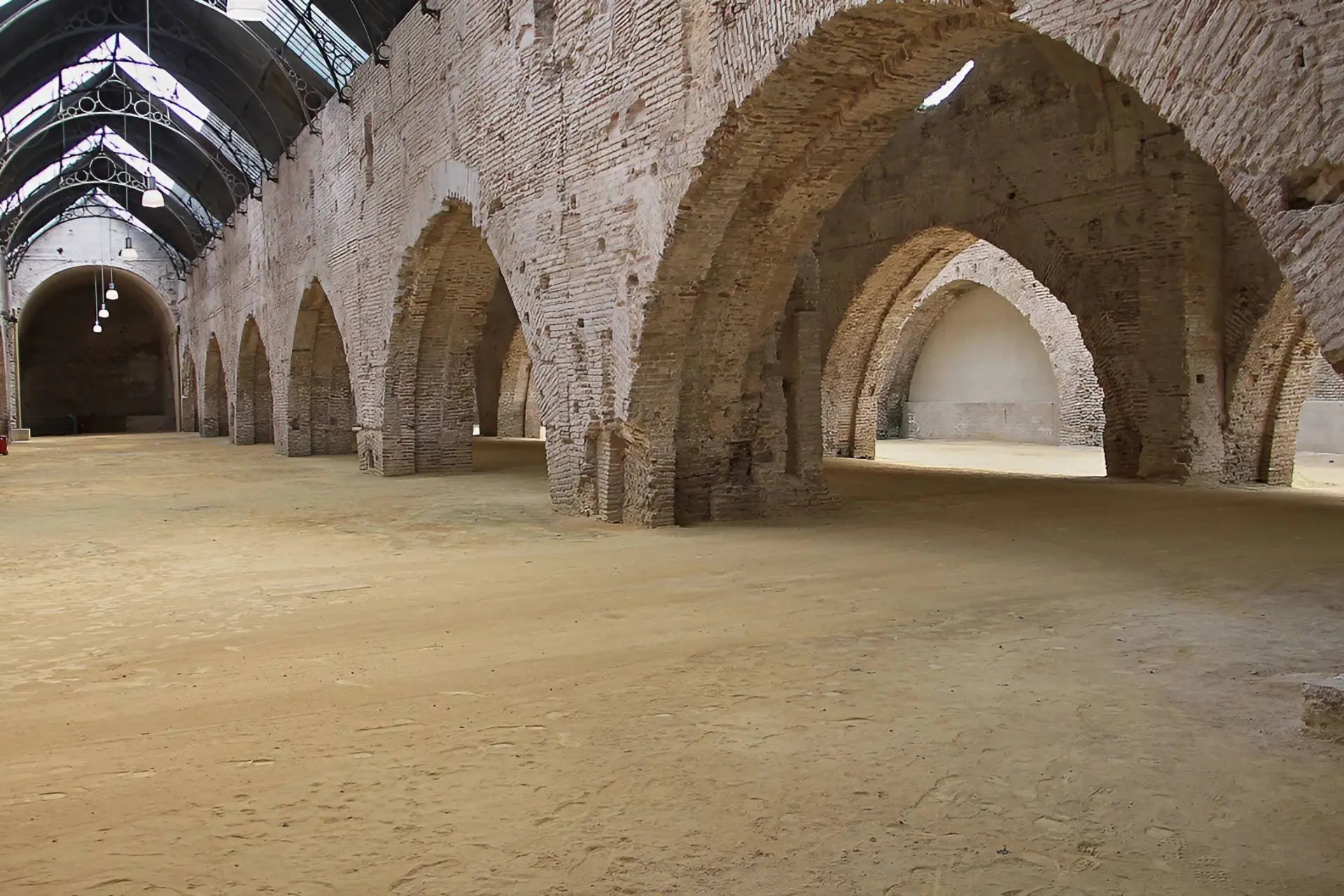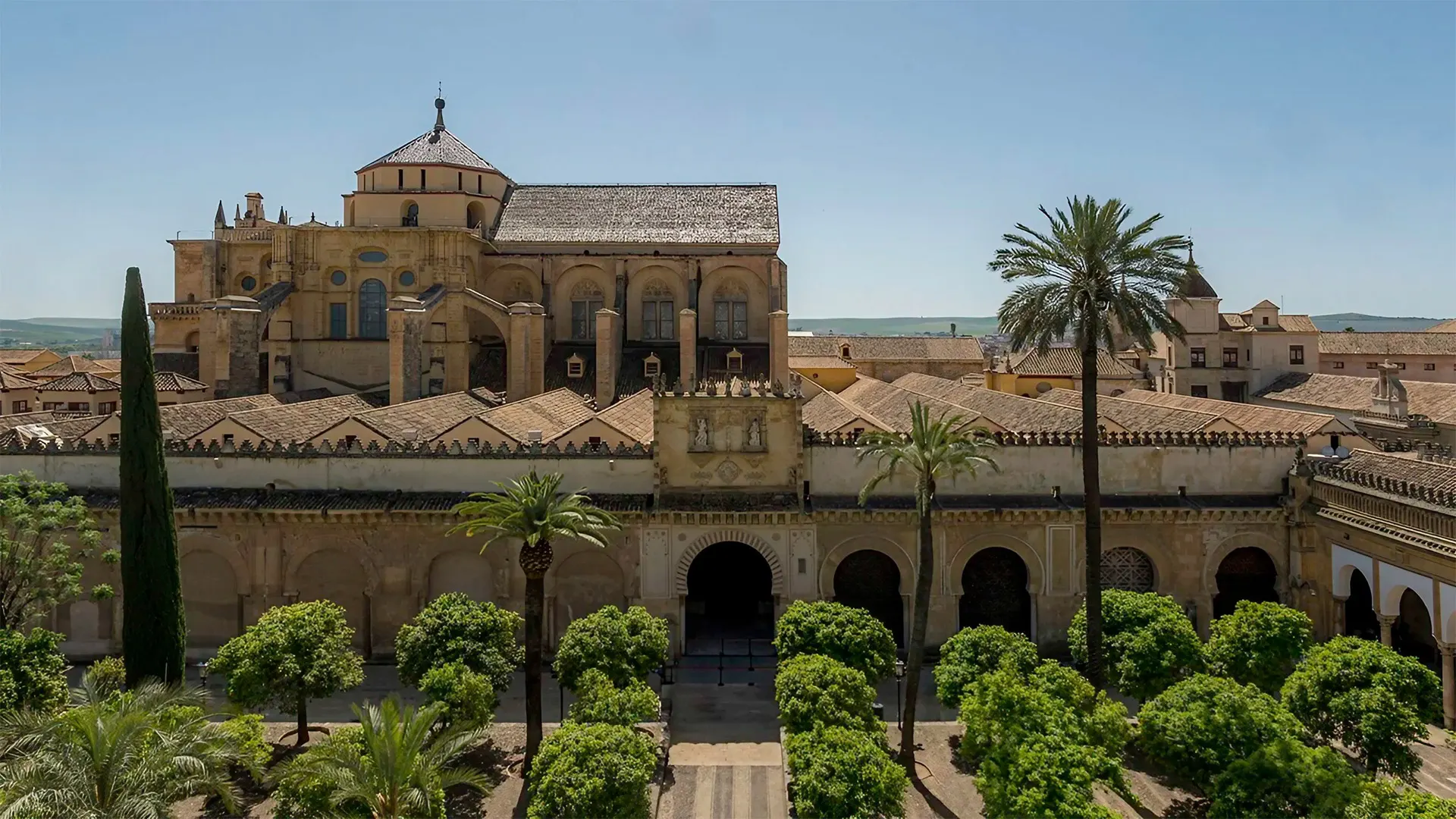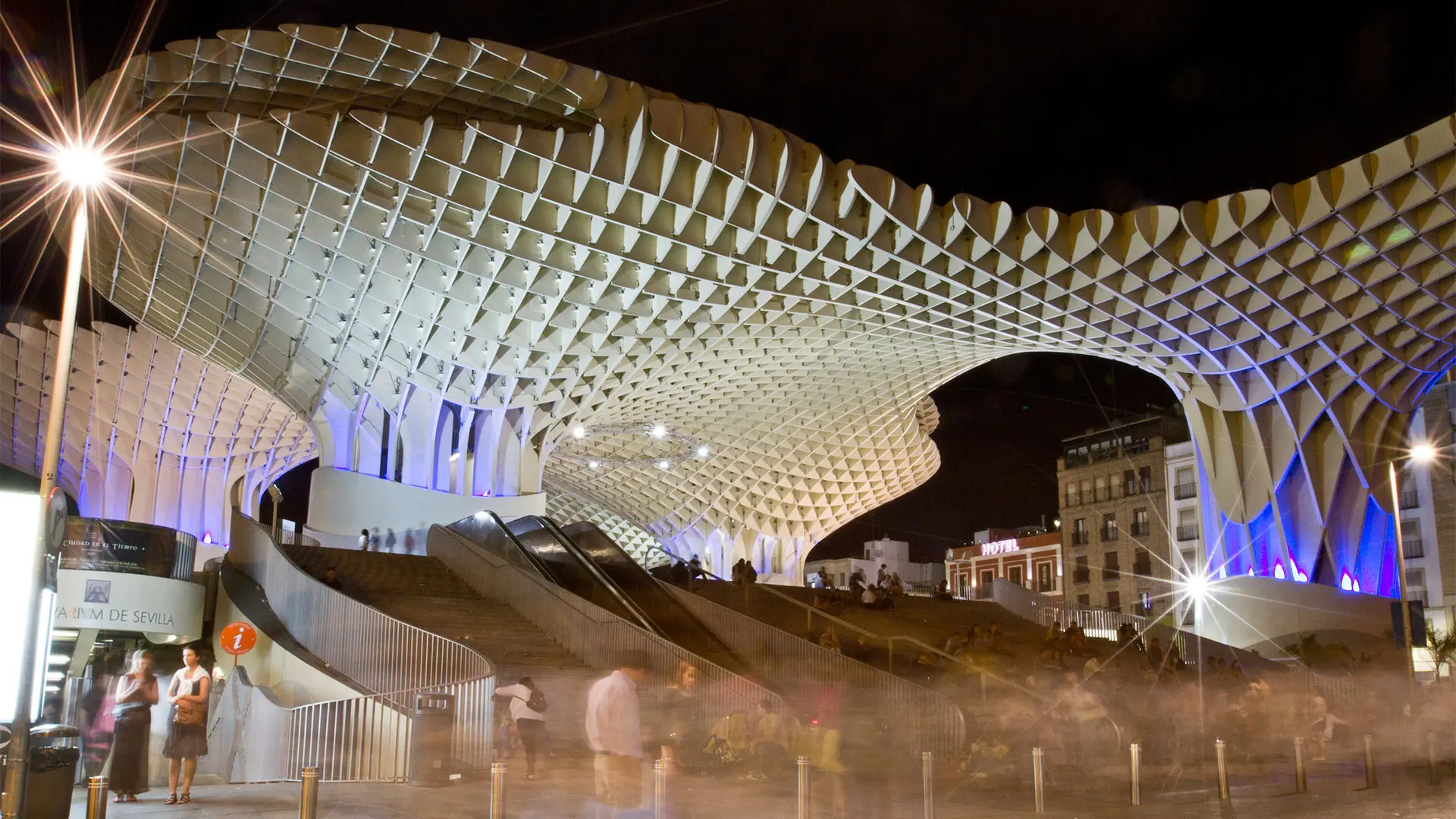Few places in Spain tell the story of al-Andalus as eloquently as the Reales Alcázares of Seville. Step through its gates and time dissolves. Arches whisper in Arabic, tiles gleam with geometric grace, and the scent of orange blossom drifts through courtyards where caliphs, kings, and conquerors once walked.
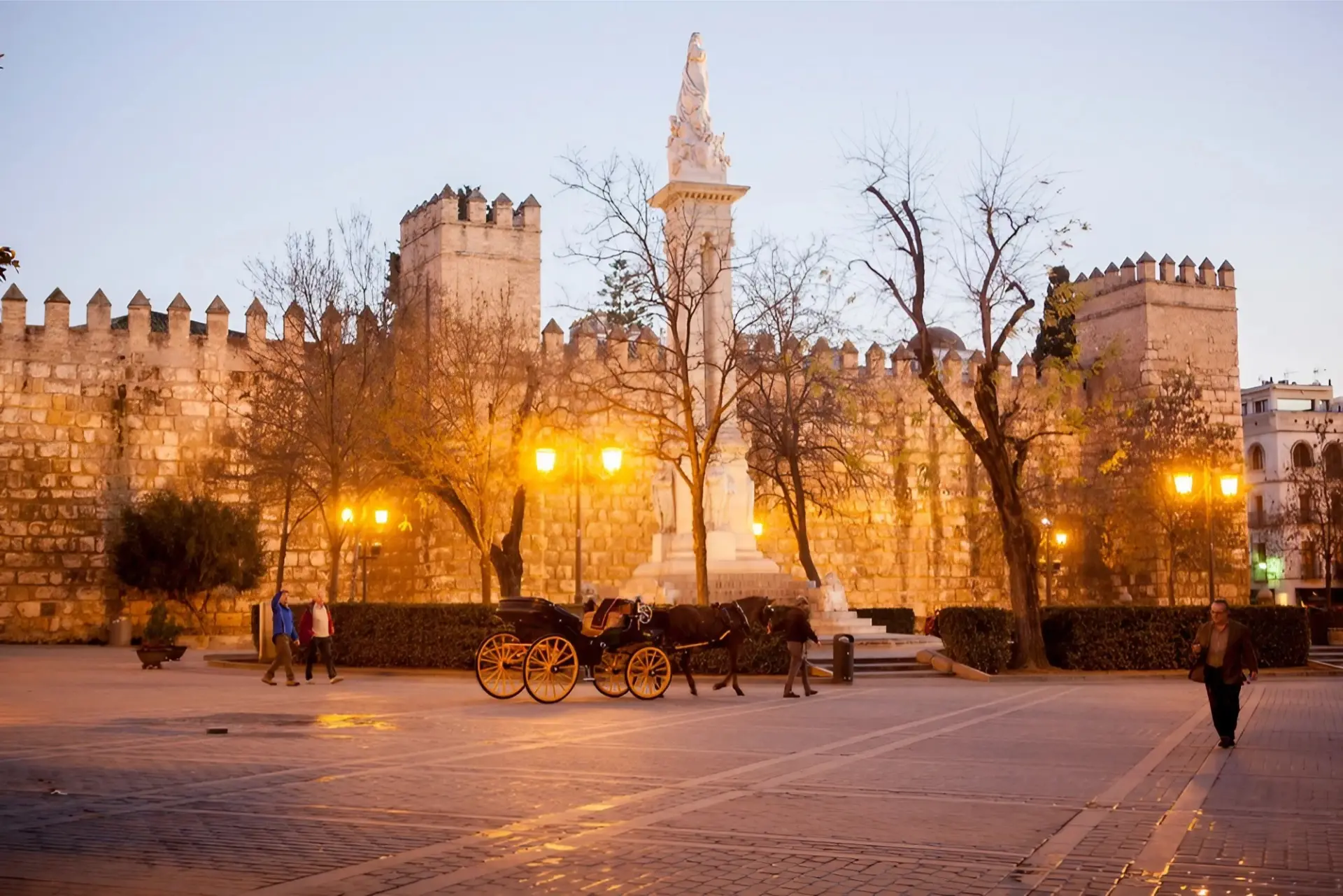
It is here, within these walls, that the TOMA & COE “Al-Andalus: A Tour of Moorish Spain with Jason Webster” unravels one of the most intricate chapters of Spain’s history — a place where Islamic artistry met Christian ambition, and where centuries of power left their mark in stone and stucco.
A palace born of al-Andalus
The Alcázar’s story begins in the early 10th century, when the Muslim governors of Seville, under the Caliphate of Córdoba, built their first fortified residence on this site. As Seville rose in prominence, the palace grew too — layer upon layer of architecture mirroring the city’s own transformation.

By the time the Abbadid dynasty ruled in the 11th century, the Alcázar had become a seat of poetry, diplomacy, and refinement. Its courts resounded with verse, and its gardens shimmered with water channels fed by the Guadalquivir — echoes of the paradise imagined in Islamic art and thought.
When the Almoravids and later the Almohads took control, they expanded the complex further, adding ceremonial halls and defensive towers. From their vision came the patterns that still define the Alcázar today: symmetrical courtyards, interlaced arches, and tiles that capture light as if it were something sacred.
The Christian kings and Mudéjar marvel
In 1248, Ferdinand III of Castile seized Seville from the Moors, but rather than demolish their palaces, he and his successors adapted them. The most remarkable transformation came under Peter I of Castile, known as Pedro the Cruel or Pedro the Just, who in the 1360s built much of what visitors see today.

Peter employed Mudéjar craftsmen — Muslim artisans living under Christian rule — to create a new kind of palace that blended Gothic structure with Islamic artistry. Arabic inscriptions praising God run alongside Castilian coats of arms; delicate muqarnas vaults bloom above Christian thrones.
The result was a masterpiece of coexistence — a palace neither fully Moorish nor wholly Christian, but uniquely Andalusian.
The Palace of Pedro I, with its breathtaking Patio de las Doncellas, forms the heart of the Alcázar’s allure. Beyond lie gardens where water murmurs through marble channels — echoes of the Islamic paradise, adapted for a Christian court. Here, Moorish irrigation met Renaissance design; palms stood beside myrtle, and the scent of jasmine mingled with the breeze from the Guadalquivir.
Over the centuries, each dynasty left its mark: Gothic vaults, Renaissance pavilions, Baroque tiles. Even today, the Spanish royal family still uses the Alcázar as an official residence, making it Europe’s oldest palace still in use.
The Alcázar in the story of al-Andalus
For travellers, Seville’s Alcázar is more than a stop on the map — it is a narrative made visible. Its stones speak of conquest and adaptation, of how cultures intertwine and reimagine one another.

Standing beneath the Arabic inscriptions carved for a Christian king, you can see the paradox of Spain’s past: the fusion and friction that defined the peninsula for centuries.
The Alcázar is a microcosm of al-Andalus itself; how ideas, aesthetics, and faiths intertwined to create one of Europe’s most dazzling civilisations.

